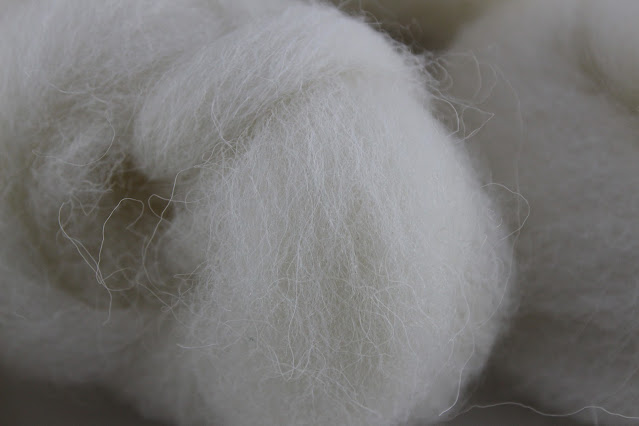The Rough Fell sheep is part of the Blackfaced Mountain family and is one of the largest of the mountain sheep and was bred in the middle ages from a Blackfaced sheep and other local breeds which are now extinct. It was first mentioned in 1848.
 |
| Top: Rough Fell Ram with impressive horns Bottom: Rough Fell Ewes also have horns but smaller |
The area in which they live has a very harsh climate and is very wet, receiving 60 to 100 inches of rain per year and during winter it is blanketed by heavy snowfalls and the Rough Fell sheep has developed an exceptionally strong and heavy fleece to cope with the conditions. The breed is primarily raised for meat and the fibre is the coarsest of the Blackface Mountain family and is often used to stuff mattresses as the outercoat resembles horsehair.
The Rough Fell is a large build sheep with a blackface that has large white markings on the faces, dominating the snout to make them look like they are wearing a black mask. The legs are white with black markings and both sexes have horns, although the ewes are much smaller than the impressive curly horns of the ram.
They produce a good size fleece of 2-3.5kg in weight with staples that are 6-12 inches long (15-30cm) that contains hair and kemp that protects them against wet weather, along with finer wool to keep them warm. This is a breed that produces wool that is definitely not for worn next to skin wear. The fleece is white and the tips are likely to be darker the the main part of the fleece.
This fleece is double-coated and so however you prepare it it is likely to separate the coats and the easiest way to do that is to just hold the base of the lock and pull on the hairy tips and you will get a lot more hair than you will get wool. You can spin the hair to make a rope type yarn to make household textiles or you could use it as garden twine. The wool is likely to have kemp in it, which wont take up any dye and if you dye both the wool and the hair they will most likely look different shades. You can spin straight from the lock
Yarns spun from Rough Fell fleece are definitely suited to household items, rugs and upholstery and not for any kind of clothing.
 |
As you can see from the photos, it is not the nicest stuff to play with.
I only got 33g of combed top from the 100g of fleece as I tried my best to remove as much of the coarsest hair to leave as much wool as I could.










No comments:
Post a Comment